What is a Resume Cover Letter
A resume cover letter is a crucial document accompanying your resume when applying for a job. It serves as your introduction to the hiring manager, providing a concise overview of your skills, experience, and qualifications while expressing your interest in the specific position and company. It’s your opportunity to make a positive first impression and demonstrate why you are the ideal candidate for the role. A well-crafted cover letter can significantly increase your chances of getting an interview.
Why is a Cover Letter Important
While a resume provides a summary of your professional history, a cover letter allows you to elaborate on specific experiences and tailor your application to the job requirements. It demonstrates your communication skills, showcases your personality, and highlights your enthusiasm for the opportunity. Many hiring managers consider a cover letter essential, as it provides valuable context and insight into your suitability for the role. A strong cover letter can set you apart from other applicants, especially when the competition is fierce.
Cover Letter vs Resume
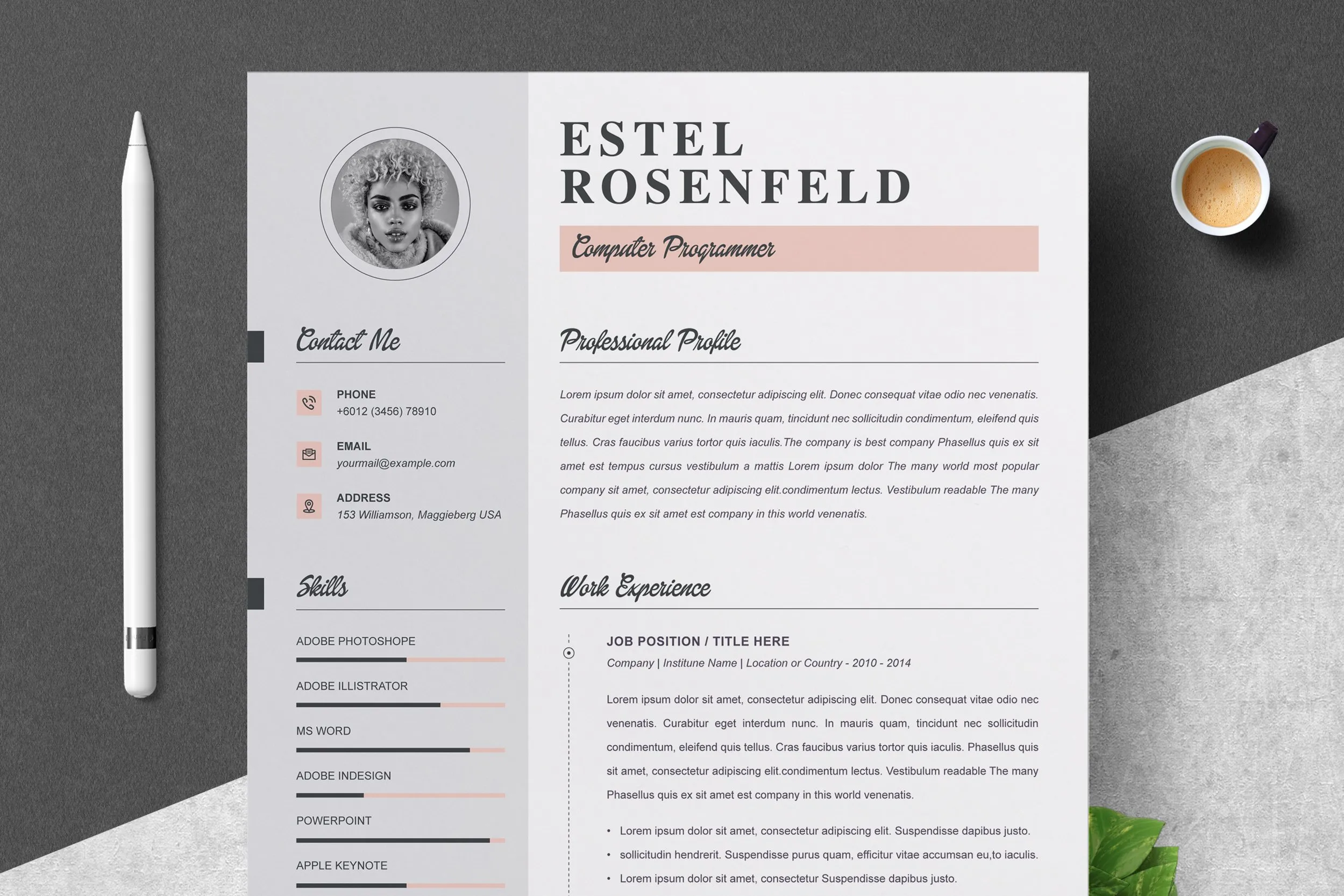
A resume provides a concise summary of your skills, experience, and education. It’s a factual document highlighting your accomplishments in a bullet-point format. On the other hand, a cover letter is a narrative document. It allows you to elaborate on specific skills and experiences, explain your motivations for applying, and demonstrate your understanding of the company and the position. The resume is about what you’ve done; the cover letter is about why you’re a good fit. You can use both in the job application process to increase the likelihood of landing a job.
Elements of a Successful Resume Cover Letter
A successful resume cover letter is well-structured, concise, and tailored to the specific job and company. It should include essential elements that capture the hiring manager’s attention and effectively communicate your value proposition. The sections below outline the key components needed to create a compelling resume cover letter that can help you stand out from the competition. Following a well-structured format helps keep your letter organized and easy to read. Let’s begin with Contact Information.
Contact Information
At the top of your cover letter, include your contact information. This should include your full name, phone number, email address, and optionally, your LinkedIn profile URL. Make sure your contact details are up-to-date and professional. Use a clear and easy-to-read font for your contact information.
Date
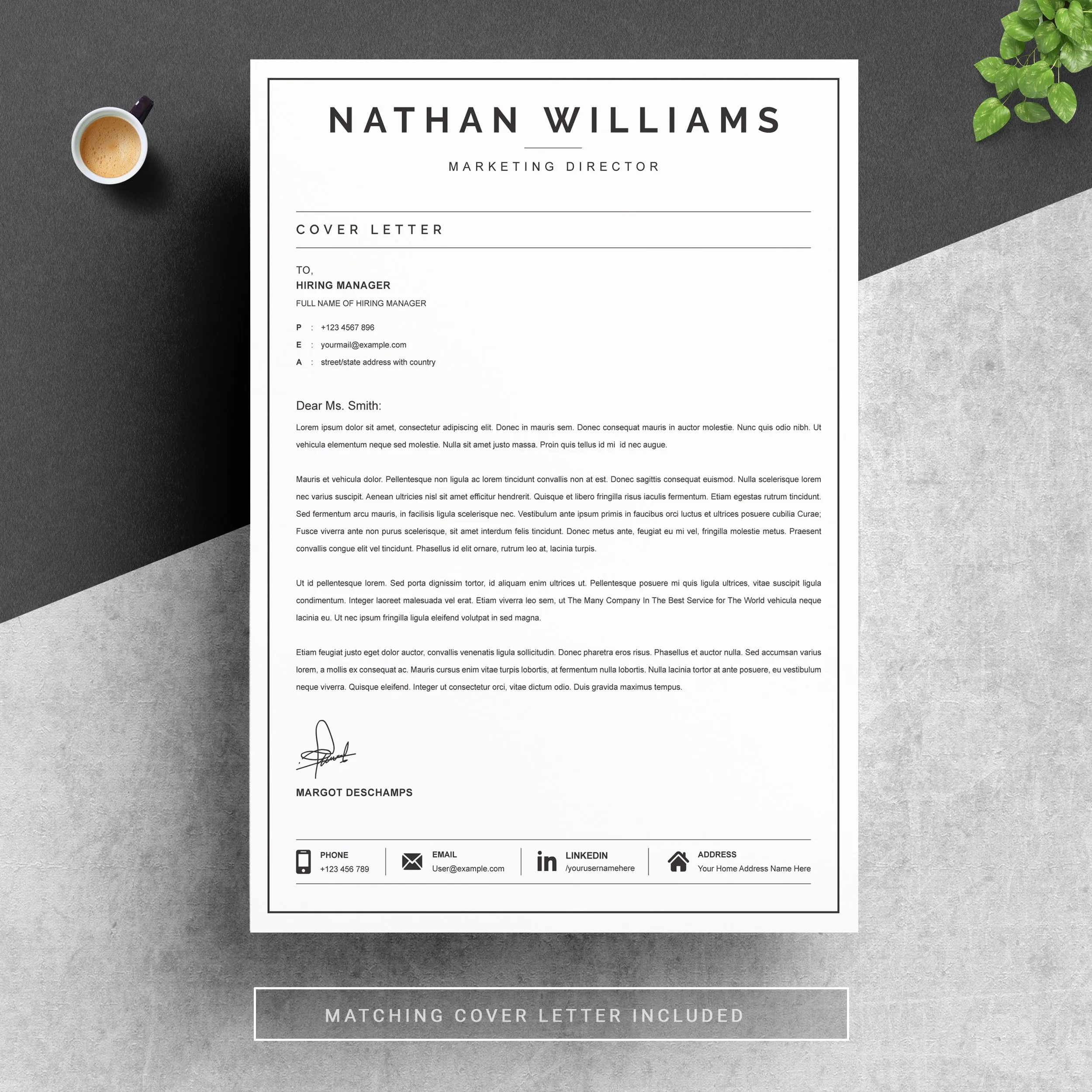
Include the date on which you are writing the cover letter. This helps the hiring manager understand when you applied for the position. Format the date appropriately, such as Month Day, Year (e.g., January 15, 2024).
Recipient’s Information
Address the cover letter to the hiring manager or the specific person mentioned in the job posting. Research the company website or LinkedIn to find the name and title of the person responsible for hiring. If you can’t find a name, use a general salutation, such as “Dear Hiring Manager”.
Salutation
Start your cover letter with a professional salutation. “Dear Mr./Ms. Last Name” is the most formal option. If you don’t know the recipient’s name, “Dear Hiring Manager” or “Dear [Department Name] Team” are acceptable alternatives. Avoid generic greetings like “To Whom It May Concern.”
Body Paragraph 1 Introduction
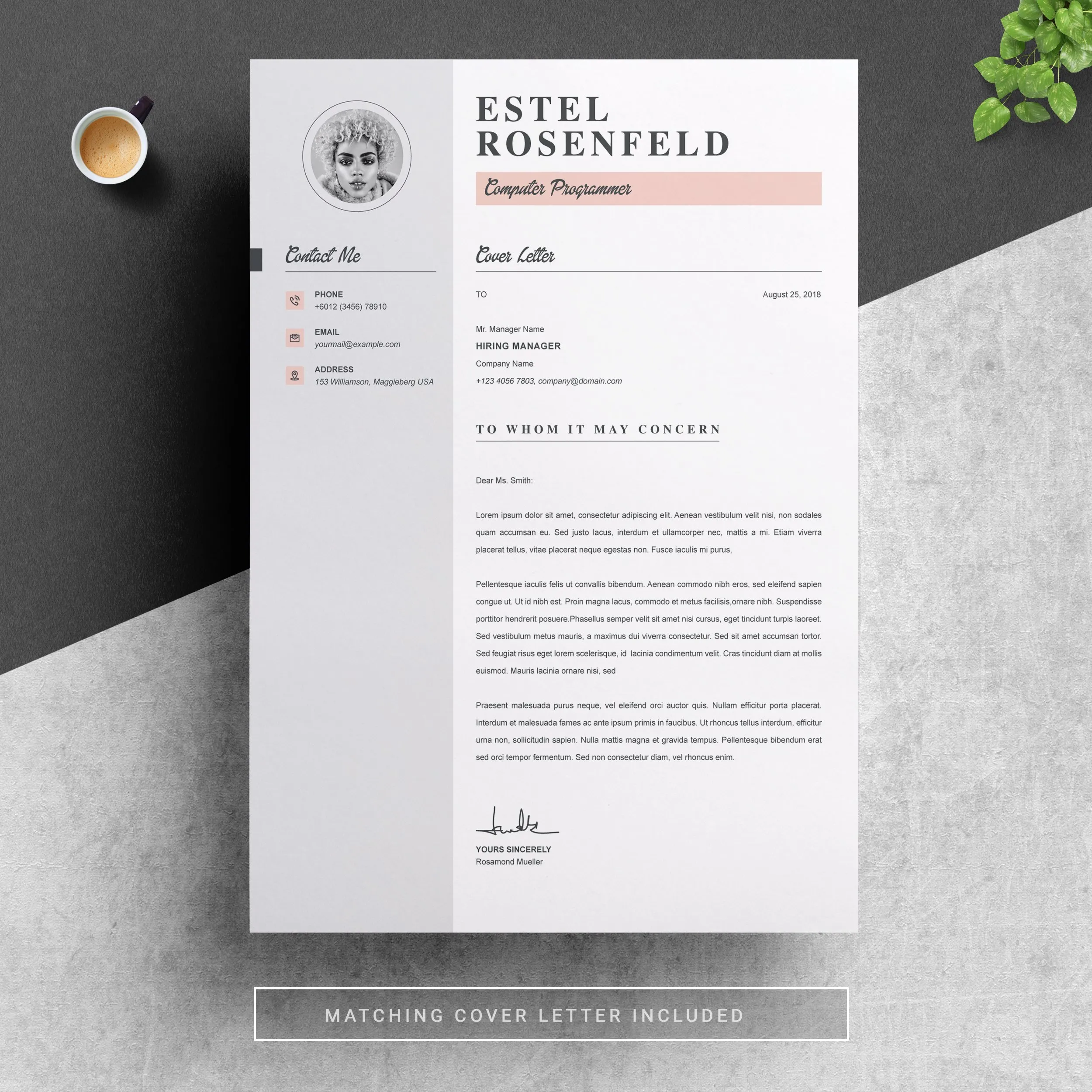
The first paragraph should grab the reader’s attention and state your purpose for writing. Briefly introduce yourself, mention the specific position you are applying for, and how you found the job posting (e.g., LinkedIn, company website, referral). Express your enthusiasm for the opportunity and the company. Provide a brief overview of your key qualifications that align with the job requirements.
Highlight your interest in the position
Clearly state your interest in the specific role and company. Explain why you’re drawn to this particular position and what excites you about the opportunity. Show that you’ve researched the company and understand its mission, values, or recent achievements. Mention any specific aspects of the job that align with your skills and career goals.
Mention where you found the job posting
Let the hiring manager know where you found the job posting. This helps them track the effectiveness of their recruitment efforts. Mention the platform or source (e.g., LinkedIn, Indeed, company website). If you were referred by an employee, mention their name as well, as this may give your application an advantage.
Body Paragraph 2 Skills and Achievements
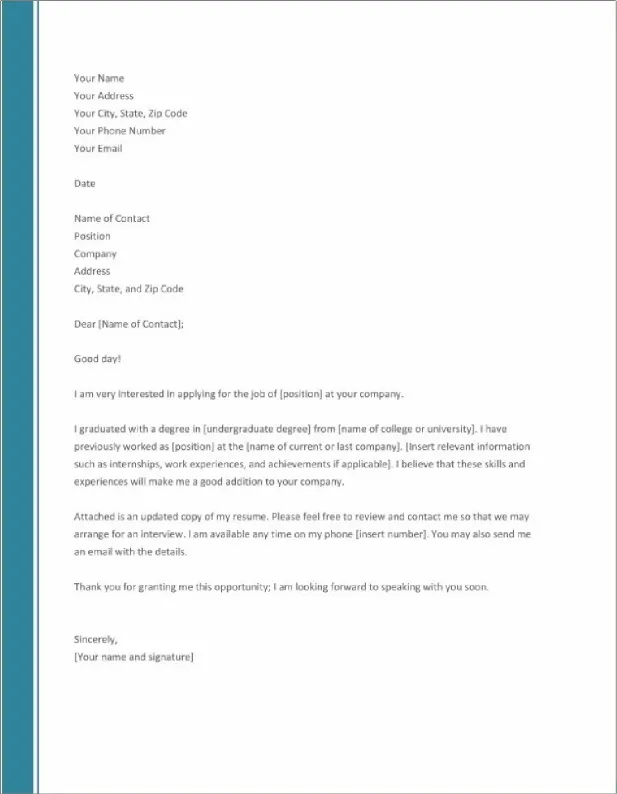
In this paragraph, highlight your relevant skills and experience. Focus on how your qualifications align with the job requirements outlined in the job description. Provide specific examples of your accomplishments that demonstrate your ability to excel in the role. Tailor the content to the job; avoid simply restating your resume. Use action verbs to describe your achievements and quantify your results whenever possible. Show that you have the necessary skills to succeed.
Provide examples of your accomplishments
Use the STAR method (Situation, Task, Action, Result) to structure your examples. Describe the situation, your task, the actions you took, and the results you achieved. Provide specific data or metrics to demonstrate the impact of your work. Select achievements that are most relevant to the job requirements and showcase your ability to deliver results.
Quantify your achievements whenever possible
Use numbers, percentages, or other metrics to quantify your achievements. For example, “Increased sales by 15%,” “Managed a budget of $1 million,” or “Reduced customer complaints by 20%.” Quantifiable results make your accomplishments more impactful and demonstrate your value to the company. Numbers add credibility to your claims and give a clearer picture of your success.
Body Paragraph 3 Company and Position
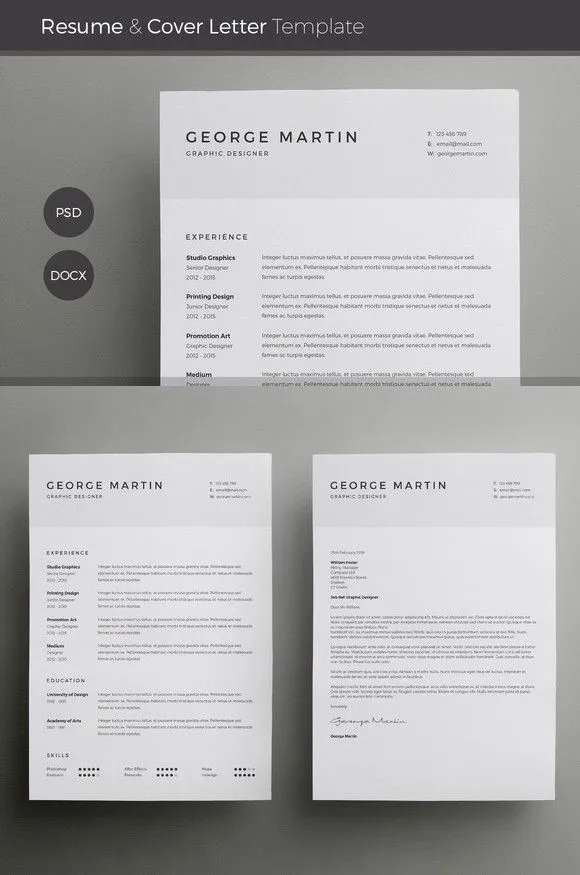
Demonstrate your understanding of the company and the position in this paragraph. Explain why you are interested in the company and what you admire about its mission, products, or culture. Explain why you believe you are a good fit for the role and how your skills and experience align with the company’s needs. Show that you’ve done your research and are genuinely interested in contributing to their success. This demonstrates that you are not just looking for a job but a career with the company.
Tailor your letter to the company
Customize your cover letter to match the company’s values, mission, and culture. Research the company’s website, social media profiles, and recent news articles. Use the company’s language and terminology to show that you understand their business and industry. Tailoring your letter increases your chances of getting noticed.
Explain why you are a good fit
Clearly articulate why you are the best candidate for the job. Connect your skills, experience, and accomplishments to the job requirements. Explain how you can contribute to the company’s goals and address their challenges. Demonstrate your enthusiasm and show how you can add value to their team. This helps the hiring manager visualize you in the role.
Body Paragraph 4 Call to Action

In the final body paragraph, include a call to action. Express your interest in an interview and reiterate your enthusiasm for the opportunity. Thank the reader for their time and consideration. Provide your contact information again and indicate your availability for an interview.
Express your interest in an interview
Clearly state your desire for an interview. Indicate your availability and express your willingness to discuss your qualifications further. Make it easy for the hiring manager to contact you and schedule an interview. Reiterate your interest in the position and the company.
Thank the reader for their time
Show your appreciation for the reader’s time and consideration. Thank them for reviewing your application and for considering you for the position. This shows professionalism and courtesy.
Closing and Signature
Close your cover letter with a professional closing and your signature. “Sincerely,” “Best regards,” or “Thank you for your consideration” are all acceptable options. Type your full name below the closing and, if submitting a printed letter, leave space for your handwritten signature.
Types of Resume Cover Letter Templates
Cover letter templates are available in various styles, each with its own formatting and design. You can choose a template based on the industry, your personal style, and the impression you want to make. Here are a few common types of templates.
The Traditional Cover Letter
Traditional cover letters typically use a formal tone and a classic layout. They often include a clear header with contact information, a formal salutation, and a structured body with paragraphs. These templates are suitable for conservative industries like finance, law, and government. The focus is on professionalism and a clear presentation of skills and experience. Using the traditional cover letter is an option for those looking to keep it simple and to the point.
The Modern Cover Letter
Modern cover letter templates feature a more contemporary design, with elements such as visual dividers, stylish fonts, and creative layouts. They can include bold headings, strategically placed sections, and graphics to highlight key information. These templates are often used in creative or tech-related fields where a more visually appealing presentation is expected. This is a good option for those seeking something more unique and attractive.
The Creative Cover Letter
Creative cover letters are designed to stand out with unique layouts, bold colors, and unconventional formatting. They are ideal for roles in design, marketing, or the arts, where creativity is highly valued. These templates allow you to showcase your personality and design skills. However, be mindful that these may not be appropriate for all industries; choose a template that aligns with the company culture.
How to Choose the Right Template
When choosing a cover letter template, consider the industry, the company, and your personal style. The best template is one that reflects your professionalism and highlights your qualifications. Select a template that aligns with the company’s culture and values. Ensure the template is easy to read, well-organized, and visually appealing without being distracting. It is very important to review your choices and pick what best aligns with your industry.
Where to Find Resume Cover Letter Templates in Word
Microsoft Word offers a variety of cover letter templates that are readily available. Here are some options for finding these templates. Open Microsoft Word and go to File New. In the search bar, type “cover letter.” A wide range of templates will appear. Choose a template that fits your needs and customize it to your preferences. You can also find free cover letter templates on websites that specialize in resumes and career resources. Be sure to download templates from trusted sources.
Tips for Customizing a Word Cover Letter Template
Customizing a Word cover letter template involves several key steps to ensure it reflects your unique qualifications and experience. Personalize the template to showcase your individuality and increase your chances of success. Customization helps you create a cover letter that resonates with the hiring manager.
Formatting Your Cover Letter
Ensure your cover letter is formatted correctly. Use a clear, easy-to-read font, such as Arial or Times New Roman. Maintain consistent formatting throughout the document. Use appropriate margins and spacing to ensure readability. Correct formatting helps the reader stay engaged with your document.
Font Selection
Choose a professional and easy-to-read font. Arial and Times New Roman are widely accepted choices. The font size should be between 10 and 12 points. Avoid using overly decorative or distracting fonts.
Margins and Spacing
Set 1-inch margins on all sides of your cover letter. Use single-spacing for the body of the letter and double-spacing between paragraphs. This helps make your letter easy to read and visually appealing.
Proofreading and Editing
Proofread your cover letter carefully for any errors in grammar, spelling, or punctuation. Ensure the letter flows logically and effectively communicates your key skills and experience. Ask someone else to review it as well to catch any errors you might have missed. Carefully proofread it several times to make sure it’s perfect. It’s one of the most important steps.
Avoiding Common Mistakes
When writing a resume cover letter, it’s essential to avoid common mistakes that can undermine your application. These include errors in grammar, generic content, and exceeding the recommended length. By avoiding these mistakes, you can create a cover letter that grabs attention and increases your chances of getting the job. Attention to detail is crucial.
Typos and Grammatical Errors
Typos and grammatical errors can make your application look unprofessional. Proofread your cover letter carefully to catch any mistakes. Use spell-check and grammar-check tools, but also manually review the document. Ask a friend or colleague to proofread your letter for any errors you might have missed. These errors can create a bad impression.
Generic Content
Avoid using generic content that could apply to any job. Tailor your cover letter to the specific job and company. Research the company and highlight your skills and experience that align with their needs. Show the hiring manager that you’ve put in the effort and are genuinely interested in the position and the company.
Length of Cover Letter
Keep your cover letter concise and to the point. Aim for a length of one page, or about 250-400 words. Avoid including unnecessary information or going into excessive detail. Focus on the most relevant and impactful points. A concise cover letter is easier to read and more effective at capturing the hiring manager’s attention.
Finalizing and Submitting Your Cover Letter
Before submitting your cover letter, ensure it is finalized and ready for submission. Carefully review your cover letter, save it in the correct format, and submit it according to the instructions in the job posting. These steps will ensure that the hiring manager receives a high-quality document that represents your professionalism.
Saving Your Cover Letter
Save your cover letter in a professional format. Use a file name that includes your name and the job title (e.g., “JohnDoe_CoverLetter_MarketingManager”). Save the file as a PDF to preserve the formatting and ensure it is accessible to the hiring manager. Always save it with the proper title.
Submitting via Email or Online
Follow the instructions provided in the job posting when submitting your cover letter. If submitting via email, attach your cover letter as a PDF. In the email, include a brief and professional subject line. If submitting online, upload your cover letter as instructed by the application system. Make sure to follow all instructions carefully.
Additional Resources
For more information and additional resources on writing effective resume cover letters, consider the following. Consult career websites, such as Indeed, LinkedIn, and Glassdoor. Review articles and guides that provide tips and examples of effective cover letters. Consider seeking professional career advice from a career counselor or resume writer. These resources will help you further refine your cover letter writing skills.
